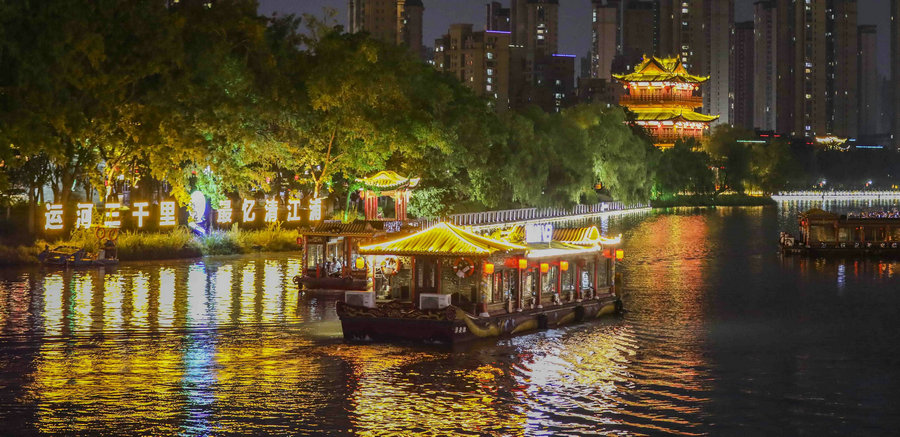
The Liyunhe (Li Canal) Cultural Corridor in Huai'an, East China's Jiangsu province, brims with hustle and bustle on summer evenings. [Photo provided to chinadaily.com.cn]
The Liyunhe (Li Canal) Cultural Corridor in Huai'an, East China's Jiangsu province, brims with hustle and bustle on summer evenings.
Residents and tourists come here, strolling along the bank, shopping at the night market to find local snacks and handicrafts, enjoying the iconic Huaiyang cuisine at restaurants overlooking the canal, or going on a boat ride on Liyunhe. With colorful lighting teasing reflections of trees and ancient-style architecture along the banks, the 30-minute ride allows tourists to fully take in the canal's nighttime beauty.
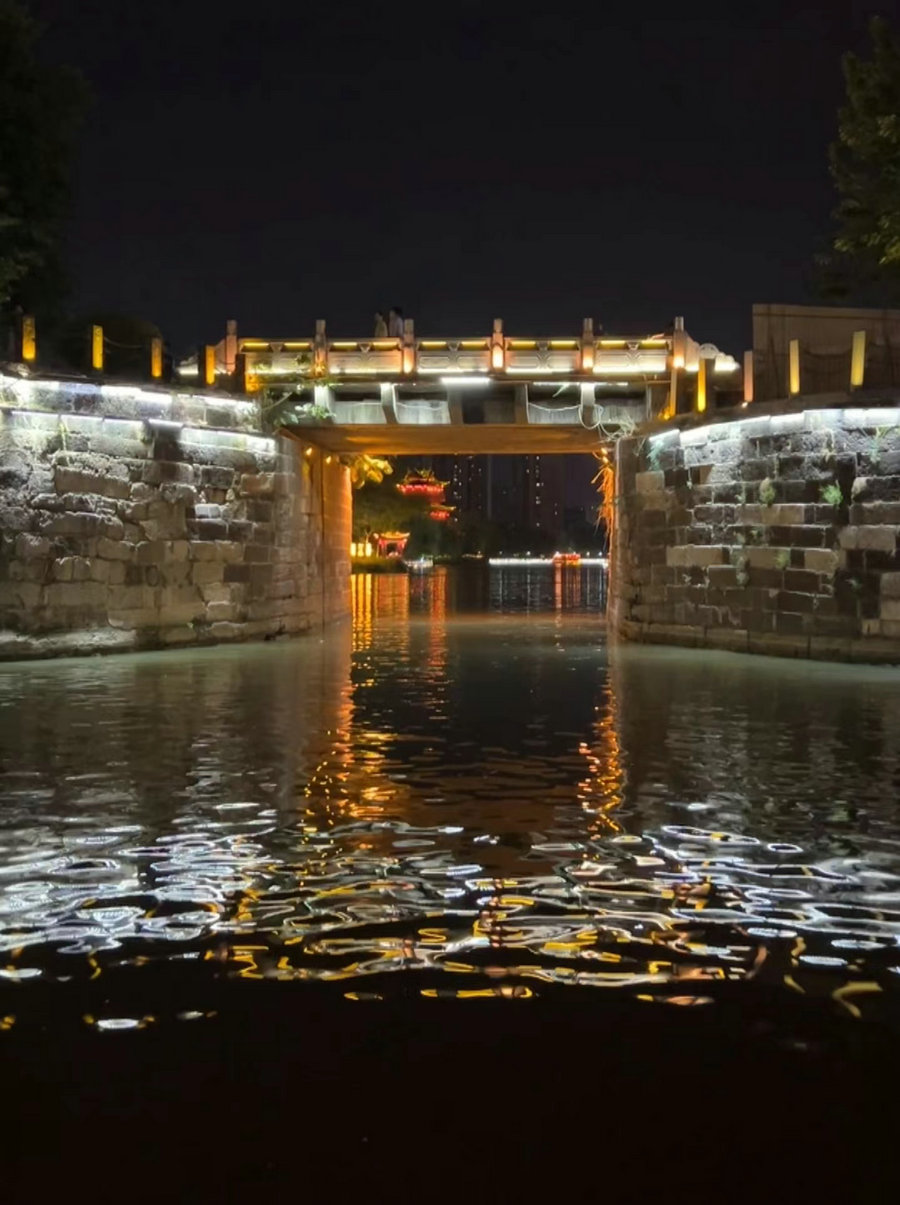
The Qingjiang Sluice on the Liyunhe (Li Canal) viewed from a boat [Photo provided to chinadaily.com.cn]
A vital section of the Grand Canal, Liyunhe was known as Qingjiangpu during the Ming and Qing dynasties (1368-1911). Boat riders can have a close-up view of the Qingjiang Sluice, one of the 58 heritage sites dotted on the 3,200-kilometer Grand Canal, listed as a UNESCO World Heritage Site in 2014.
Constructed in the early Ming Dynasty (1368-1644), the sluice, measuring 11.5 meters high and 7.3 meters wide, is the oldest and best-preserved boat lock on the Grand Canal. It was for preventing the backflow of the Yellow River and the silting up of the waterway.
"When closed, it could create a roughly one-meter water level difference on both sides," Ji Yu, a veteran local tour guide specializing in Grand Canal tourism, told the China Daily website during a media tour on Sunday. "When the sluice was opened, it pushed boats to move northward. The opening and closing of the sluice gates were carefully managed to regulate water levels to ensure the Caoyun system's smooth operation."
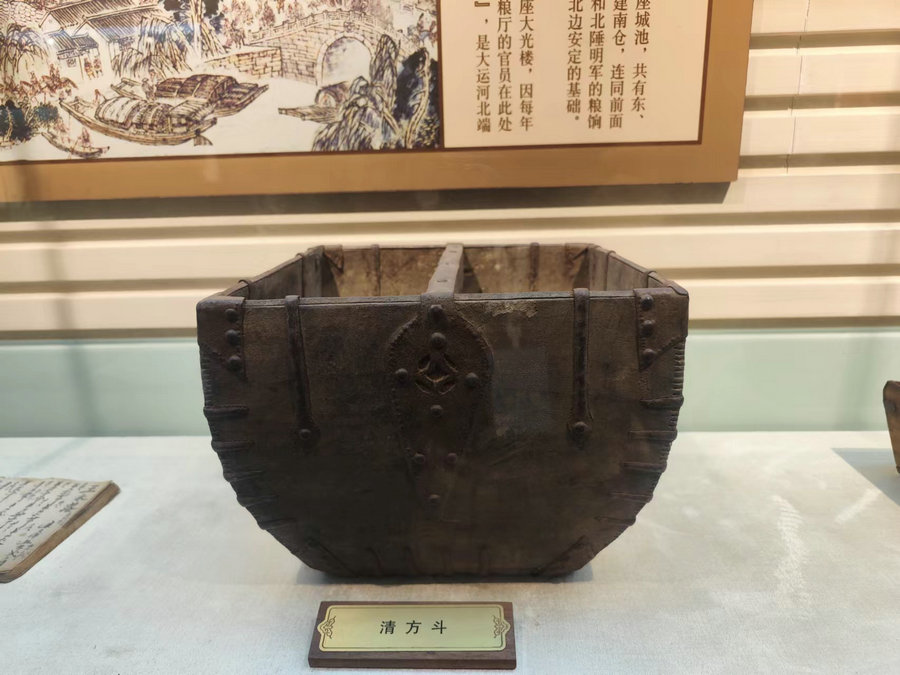
A gauge used for measuring tribute grain in Qing Dynasty (1644-1911) on display at the China Caoyun Museum in Huai'an, East China's Jiangsu province [Photo by Yang Xiaoyu chinadaily.com.cn]
Caoyun, meaning water transport of tribute grain, was the centralized transportation system used by central governments of imperial China to collect grain—an important form of tax levied on agricultural land in the lower Yangtze region—and transport it via the Grand Canal to locations such as capitals and border garrisons.
A factor of stability for the Chinese Empire for more than 2,000 years, Caoyun "contributed to the fundamental link between the peasant economy, the imperial court, and the supply of food to the population and troops," according to UNESCO.
"During the Caoyun season, the Qingjiang Sluice would witness more than 10,000 boats carrying tribute grain and 120,000 Caoyun soldiers passing through, stringing miles on the canal," Ji said.
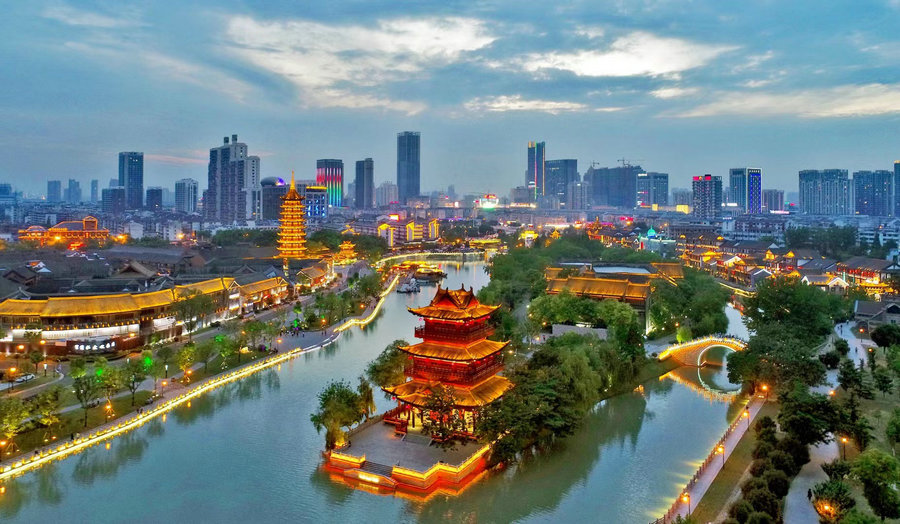
A bird's-eye view of the Liyunhe (Li Canal) Cultural Corridor at dusk in Huai'an, East China's Jiangsu province [Photo provided to chinadaily.com.cn]
Lying on and named for the Huaihe River, the historical boundary between Northern and Southern Chinese culture, Huai'an is also where the Grand Canal connects with the Huaihe River, making it a natural transportation hub in ancient times.
A strong testament to Huai'an as the Caoyun capital during the Ming and Qing dynasties is the Site of Caoyun Governor's Mansion, discovered in 2002 in the city's Huai'an district during an urban renewal project.
Historical records indicate that China's imperial governments started setting up Caoyun administrations in Huai'an in the Sui Dynasty (581-618), and in the early Ming Dynasty, the central government designated Shanyang (today's Huai'an) as the seat of the empire's top Caoyun authority – Caoyun Governor's Mansion.
The mansion, at its peak, was a sprawling complex consisting of as many as 213 rooms, according to archeological studies.
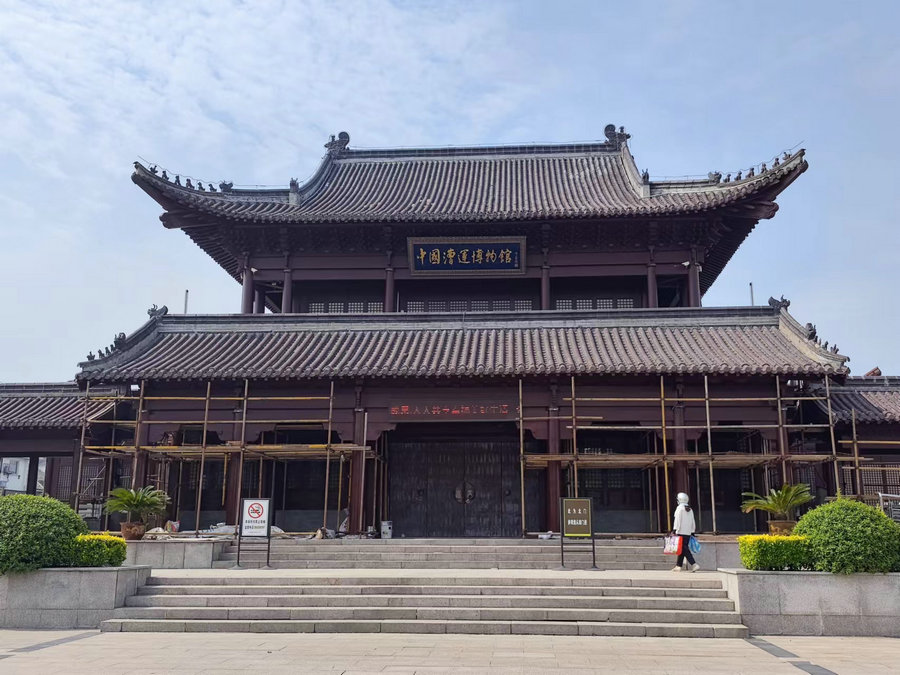
The China Caoyun Museum in Huai'an, East China's Jiangsu province [Photo by Yang Xiaoyu chinadaily.com.cn]
"The following archeological excavation of the site in 2011 revealed that the Caoyun Governor not only oversaw the Caoyun affairs of seven provinces but also had the power to deploy troops," said Zhang Chi, curator of the China Caoyun Museum, which opened in 2011.
On display at the museum, there includes ancient water transport tools, letters of Caoyun officials, various tribute grain gauges and relics recovered from shipwrecks unearthed in the city, presenting the history and culture associated with the Caoyun system as well as Huai'an's illustrious past as a transportation hub along the Grand Canal.
For example, one of the highlights at the museum is a pile of more than 10,000 broken ceramic pieces, which is from an accumulation of Longquan celadon shards unearthed from the city's Hexia Ancient Town in 2008.
The exquisite celadon porcelain produced by kilns in Longquan, Zhejiang province was mainly used as royal tribute in ancient China.
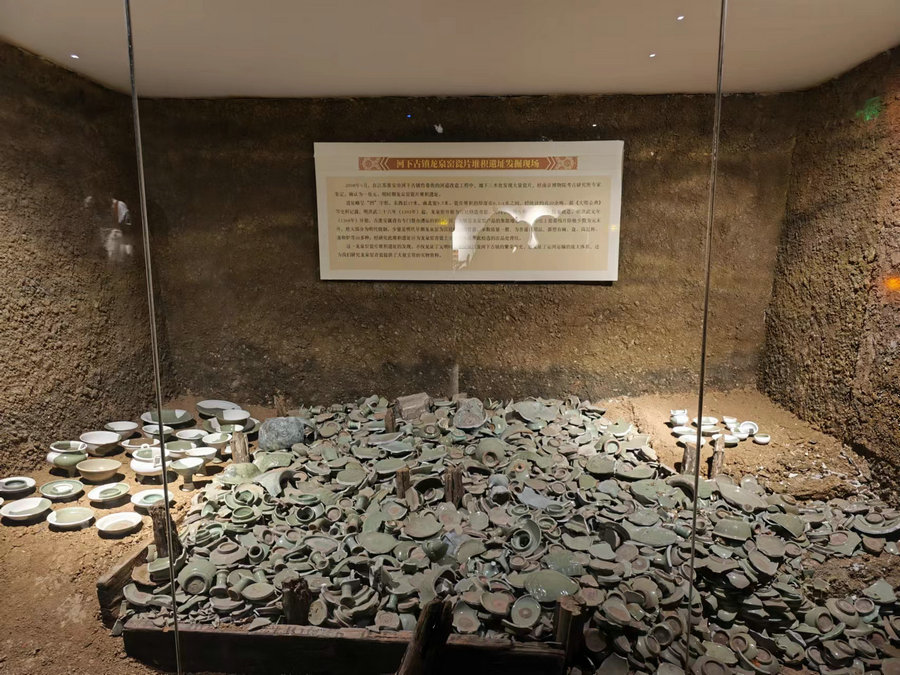
A pile of more than 10,000 Longquan celadon shards unearthed from Huai'an's Hexia Ancient Town, on display at the China Caoyun Museum in Huai'an, East China's Jiangsu province [Photo by Yang Xiaoyu chinadaily.com.cn]
"In the Ming Dynasty, large quantities of Longquan celadon were transported via the Grand Canal from Zhejiang to the capital as tribute or other places for sale. When porcelain ships arrived in Huai'an, checks were made to get rid of those defective or broken ones," Zhang said. "The accumulation weighed more than 20 tons, begging the question of how large the transportation scale really was on the Grand Canal."
The curator argued that the archeological finding is another testimony to Huai'an being a water transport hub with active commodity circulation hundreds of years ago.
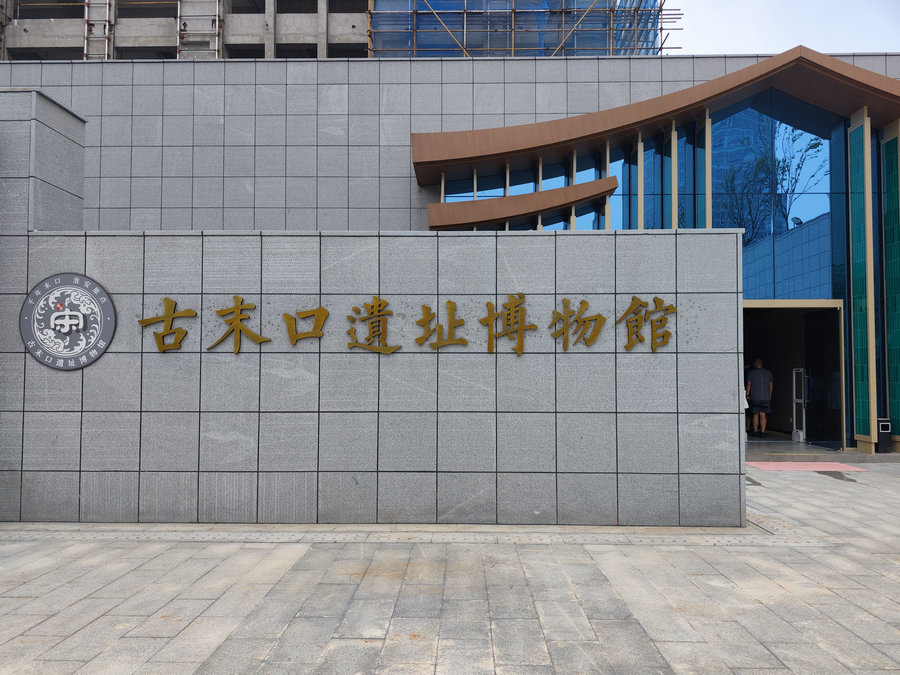
The Ancient Mokou Site Museum, a new museum which opened in May, highlights the genesis of Huai'an as the ending point of China's first canal excavated some 2,500 years ago.[Photo by Yang Xiaoyu chinadaily.com.cn]
The Ancient Mokou Site Museum, a new museum that opened in May, unveils the genesis of Huai'an as the ending point of China's first canal excavated some 2,500 years ago.
History has it that to ship supplies north in case his forces should engage the northern states, King Fuchai of the Wu State - during the Spring and Autumn Period (770-476 BC) - dug the Hangou Canal to connect the Yangtze River and the Huaihe River. Fuchai's canal started in today's Yangzhou and ended in Mokou, where Huai'an stands today.
The museum features ruins of a dam and a wharf dating back to the Southern Song Dynasty (1127-1279). Visitors can find bricks engraved with "Huai'an Zhou" (Huai'an City) in the walls of the ruins.
With stunning multi-media visuals, enchanting interactive installations and an immersive market, the Ancient Mokou Site Museum offers the audience a way to time-travel into Huai'an's brilliant past inextricably intertwined with the Grand Canal for millennia.

The Liyunhe (Li Canal) Cultural Corridor in Huai'an, East China's Jiangsu province, brims with hustle and bustle on summer evenings. [Photo provided to chinadaily.com.cn]
编辑:韩睿